Your entryway serves as the gateway to your home. It’s the first space you encounter when you walk in, and the last one you see before you leave. Often, however, this crucial area becomes a dumping ground for coats, shoes, mail, and bags, transforming from a welcoming transition into a chaotic obstacle course. If you’re a busy homeowner, renter, or apartment dweller, you know the struggle of trying to keep this high-traffic zone tidy when time is short.
The good news? You can conquer entryway clutter and create a functional, inviting space in under an hour. This isn’t about achieving magazine-perfect results, but about implementing practical, actionable steps that deliver a quick, satisfying win. We focus on realistic systems that maintain order, acknowledge your budget, and fit into your real life, even with limited time and space.
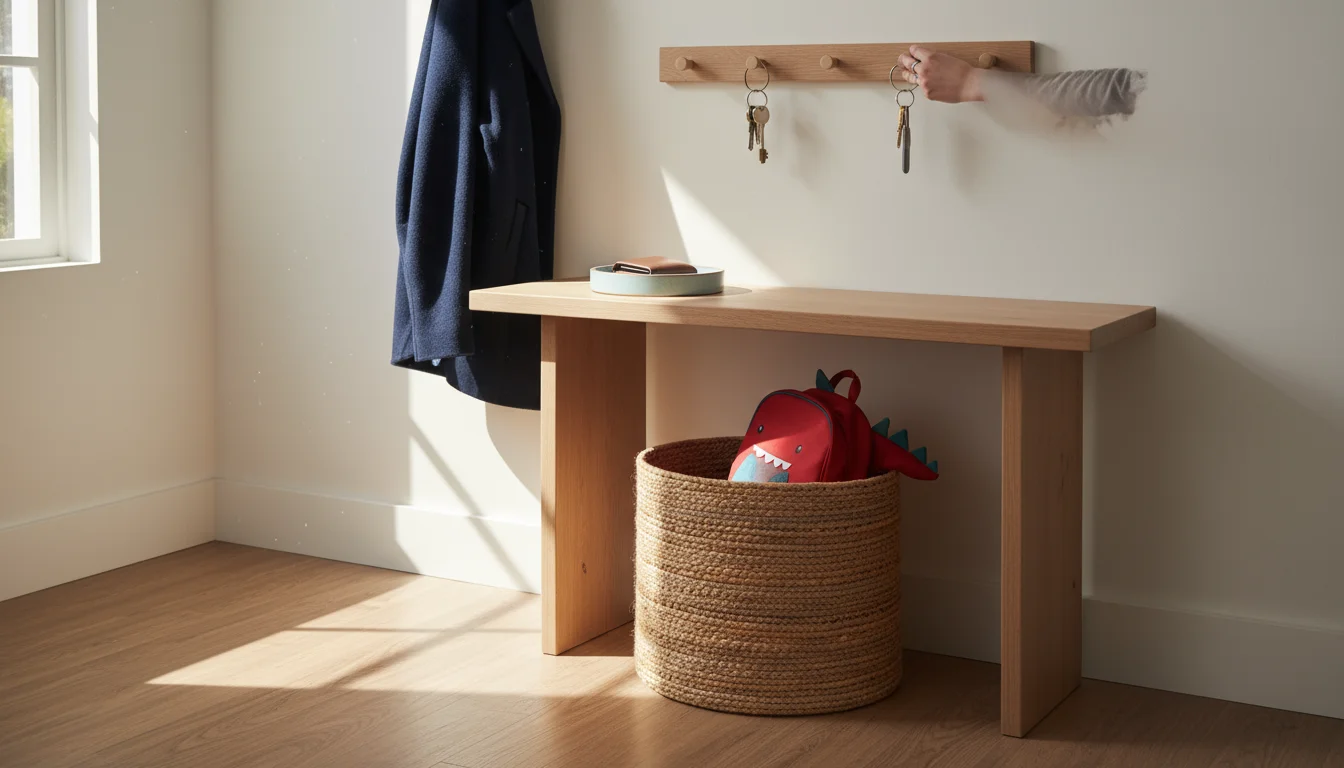
Why Your Entryway Deserves This Quick Win
A well-organized entryway does more than just look nice, it impacts your daily routine and mood. Think about it: a tidy space greets you with calm when you arrive home, setting a positive tone for your evening. It also streamlines your departure, eliminating frantic searches for keys or matching shoes.
We believe in the power of “zones” – designated areas for specific activities or items. When your entryway has clear zones, every item has a home, making it easy to put things away and find them quickly. This reduces decision fatigue and daily stress. Imagine leaving the house feeling prepared and arriving home to a sense of order. That’s the power of intentional entryway organization, even a quick one.
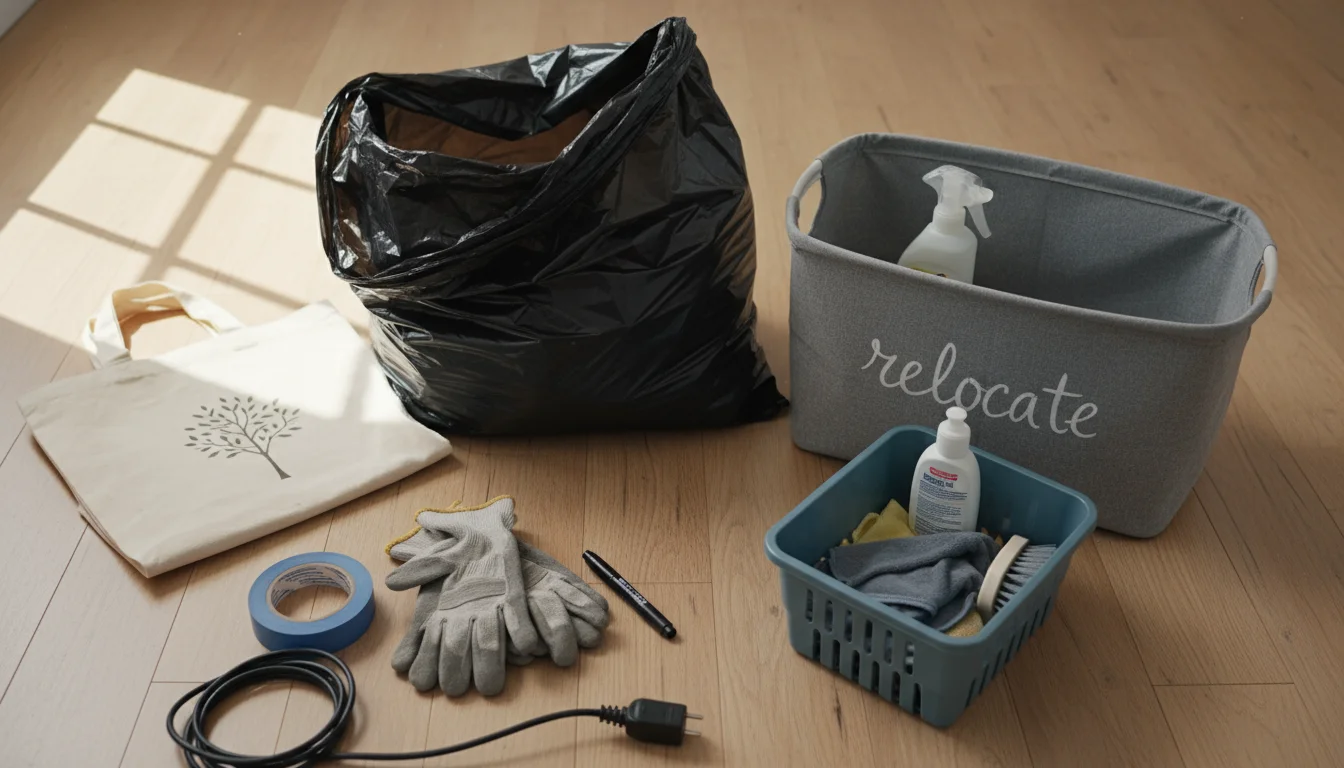
Gather Your Tools: Preparation for Speed
Speed is key to organizing your entryway in under an hour. You maximize your time by preparing your tools before you start. Gathering everything upfront prevents interruptions, keeping you focused on the task at hand. This step should take you no more than five minutes.
Here’s what you need:
- A large trash bag: For obvious garbage and items beyond repair.
- A donation box or bag: For clothing, accessories, or household items still in good condition but no longer serving you.
- A laundry basket or designated “relocate” bin: For items that belong in other rooms of your house.
- Basic cleaning supplies: A microfiber cloth, all-purpose spray cleaner, and a small vacuum or broom and dustpan.
- A timer: Set it and stick to it. This creates a sense of urgency and helps you avoid getting sidetracked.
Having these items ready minimizes your effort and helps you power through the organization process efficiently.
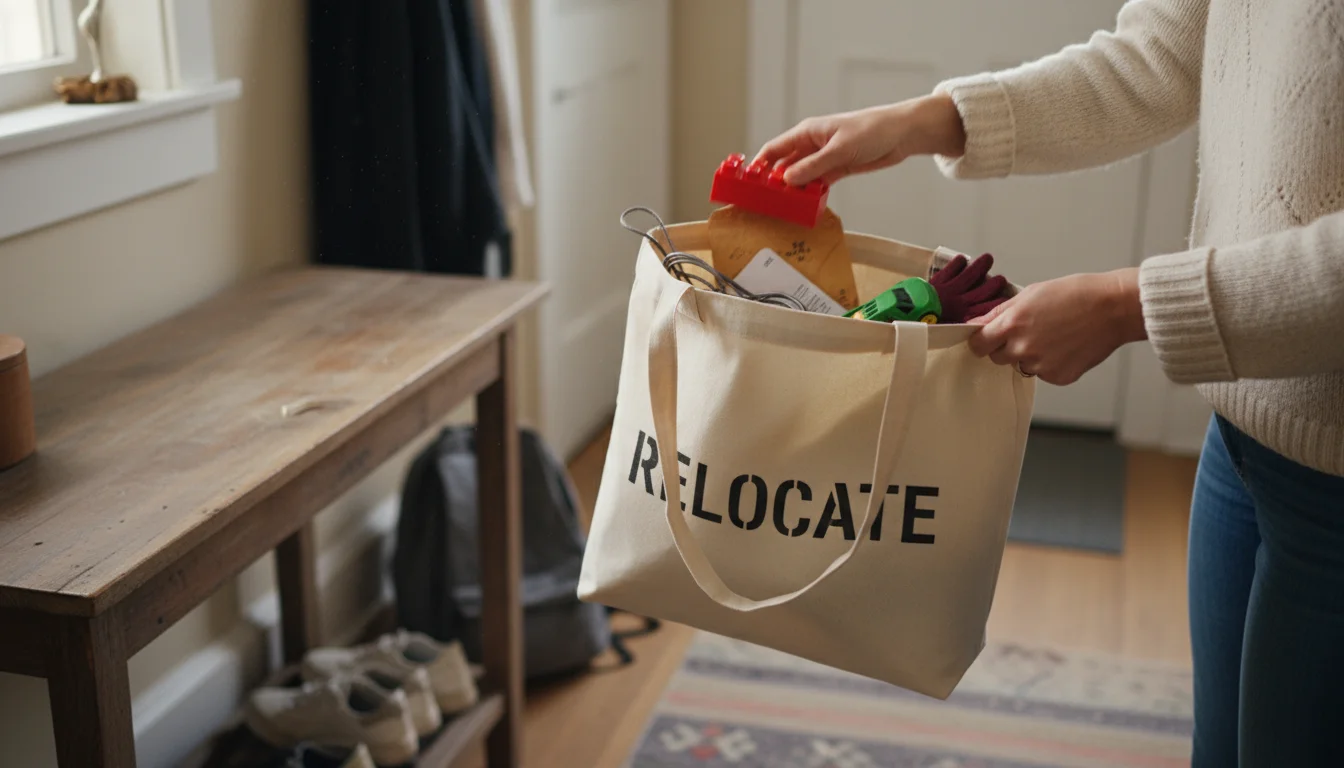
Phase 1: The Lightning Declutter (15 Minutes)
This is where you make significant progress fast. The goal of the lightning declutter is to remove anything that doesn’t belong in your entryway, not to perfectly organize what remains. Focus on quick decisions; avoid sentimental dives or deep cleaning at this stage. You have 15 minutes, so move with purpose.
Here’s your action plan:
- Empty the space: Start by quickly grabbing every single item that doesn’t belong in your entryway. This includes random toys, dirty dishes, stacks of old magazines, or items that clearly belong in a bedroom or kitchen. Place them directly into your “relocate” bin.
- Target obvious trash: Go through any visible piles or surfaces and immediately toss any legitimate trash into your trash bag. This could be old receipts, empty coffee cups, or packaging.
- Identify donations: Look for coats, hats, scarves, or bags that you no longer wear or use. If an item is in good condition but hasn’t been touched in a season, or if it doesn’t fit, put it directly into the donation box. This applies especially to excess items.
- Address shoes: Gather all the shoes. For each pair, ask yourself: “Do I wear these regularly?” If the answer is no, consider moving them to a closet in another room or donating them if they are still wearable. Only keep the shoes you wear most often in the entryway. If a shoe is broken beyond repair, into the trash it goes.
- Sort mail and papers: Quickly go through any mail or papers. Recycle junk mail immediately. Place bills or important documents in your “relocate” bin to process later at your desk or kitchen. Avoid reading anything in detail right now.
Remember, the goal is to make swift decisions. If you hesitate for more than five seconds on an item, put it in the “relocate” bin and deal with it later. You want to clear the visual clutter quickly.

Phase 2: Clean and Reset Your Space (10 Minutes)
With the clutter gone, you now have a blank slate. This phase is crucial for a truly organized feel. Cleaning before you organize ensures you place your items back into a fresh environment, making the whole space feel renewed. You have 10 minutes for this.
Your quick clean-up steps:
- Dust all surfaces: Use your microfiber cloth and all-purpose spray to quickly wipe down any console tables, shelves, or benches. Don’t forget light switches and door handles, as these collect fingerprints and dust.
- Clean the floor: Sweep or vacuum the entryway floor. Pay attention to corners and under any existing furniture where dust bunnies and debris often hide. If you have hard floors, a quick pass with a damp mop can make a big difference.
- Wipe down doors and walls (if needed): If you spot any obvious smudges or dirty marks on the lower part of the walls or the inside of your entry door, give them a quick wipe.
A clean space enhances the perception of organization and truly makes your effort feel worthwhile. It’s an essential step in creating a welcoming entrance.
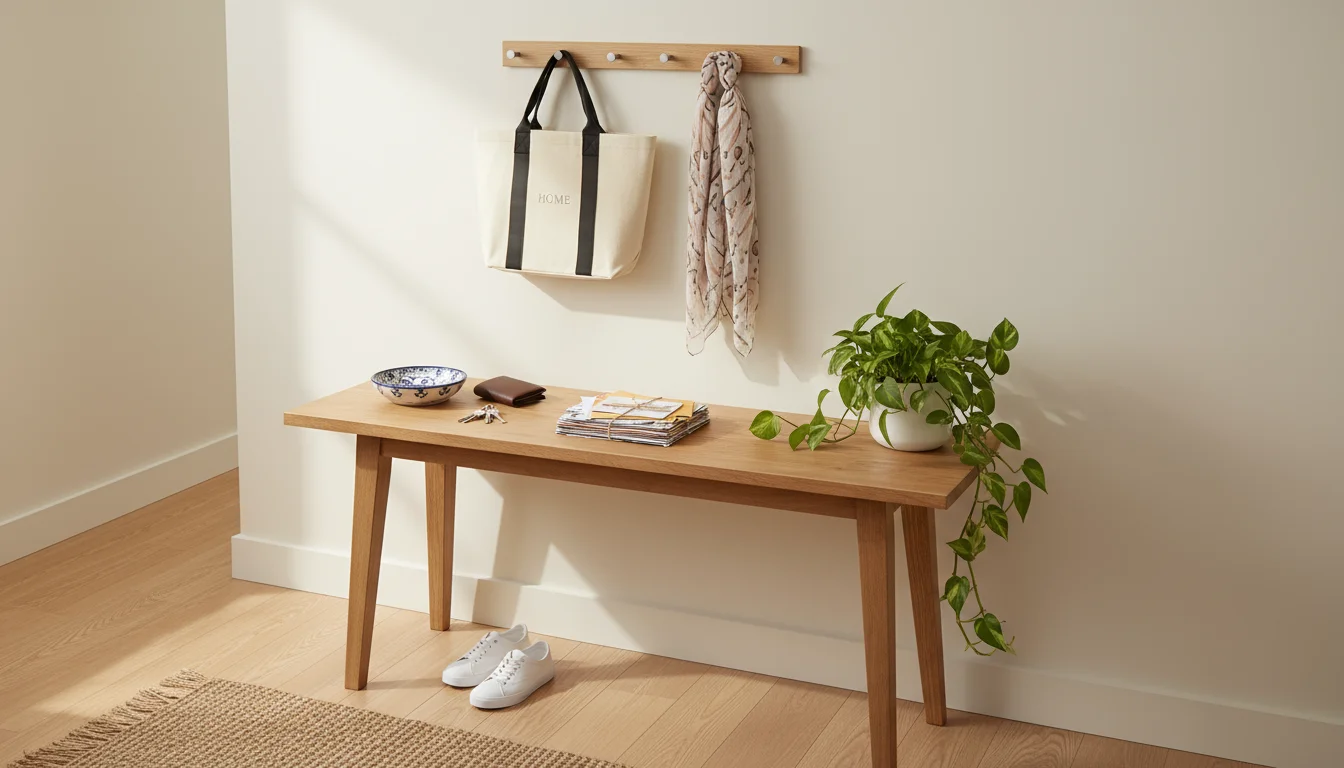
Phase 3: Strategize Your Entryway Organization Zones (20 Minutes)
Now for the fun part: establishing smart, functional zones that keep your entryway organized long-term. With 20 minutes remaining, you’ll put back only the items that truly belong here, giving each type of item a designated home. This is where you create your efficient mudroom organization or entryway organization system.
Consider the typical items that land in your entryway and group them into logical zones:
1. The Drop Zone (Keys, Wallet, Mail):
- What it is: A small, designated area immediately accessible upon entering for essential items you carry daily.
- Solutions: A small bowl or tray on a console table, a wall-mounted key hook rack, or a floating shelf with a small basket.
- Budget-friendly tip: Reuse a decorative dish or a small, sturdy box you already own.
2. The Coat and Bag Zone:
- What it is: A place for outerwear and bags to be stored neatly.
- Solutions:
- Wall hooks: Install sturdy hooks at varying heights for adults and children. Consider over-the-door hooks if wall space is limited.
- Coat rack: A freestanding coat rack works well if you have floor space.
- Bench with hooks: A small bench offers a spot to sit while putting on shoes and can have hooks above it.
- Budget-friendly tip: Simple, strong adhesive hooks can hold lighter items without damaging walls, or repurpose an old wooden hanger as a wall hook by adding screws.
3. The Shoe Storage Zone:
- What it is: A dedicated area for shoes that keeps them off the floor and out of sight. This is a critical element of entryway organization.
- Solutions:
- Shoe tray: Perfect for containing dirt and water, especially in wet climates.
- Tiered shoe rack: Efficiently stores multiple pairs vertically.
- Shoe cabinet or bench with cubbies: Hides shoes away and provides extra seating.
- Budget-friendly tip: A simple plastic bin or a low basket can serve as an effective shoe storage solution. You can also build a simple wooden shoe rack with basic tools. For ideas on maximizing space, you can explore resources like Apartment Therapy’s organizing articles for creative solutions.
4. The Out-the-Door Essentials Zone:
- What it is: A spot for items you grab on your way out the door.
- Solutions: A small basket or bin for umbrellas, dog leashes, sunglasses, or reusable shopping bags. Place this near the door.
- Budget-friendly tip: Use a decorative basket or woven bin you already have, or find inexpensive options at discount stores.
As you implement these zones, prioritize vertical space, especially in smaller entryways. Wall-mounted solutions save valuable floor space. For inspiration on maximizing small spaces, The Spruce offers comprehensive organizing tips that can apply to any home. Remember, your goal is functionality and ease of use.
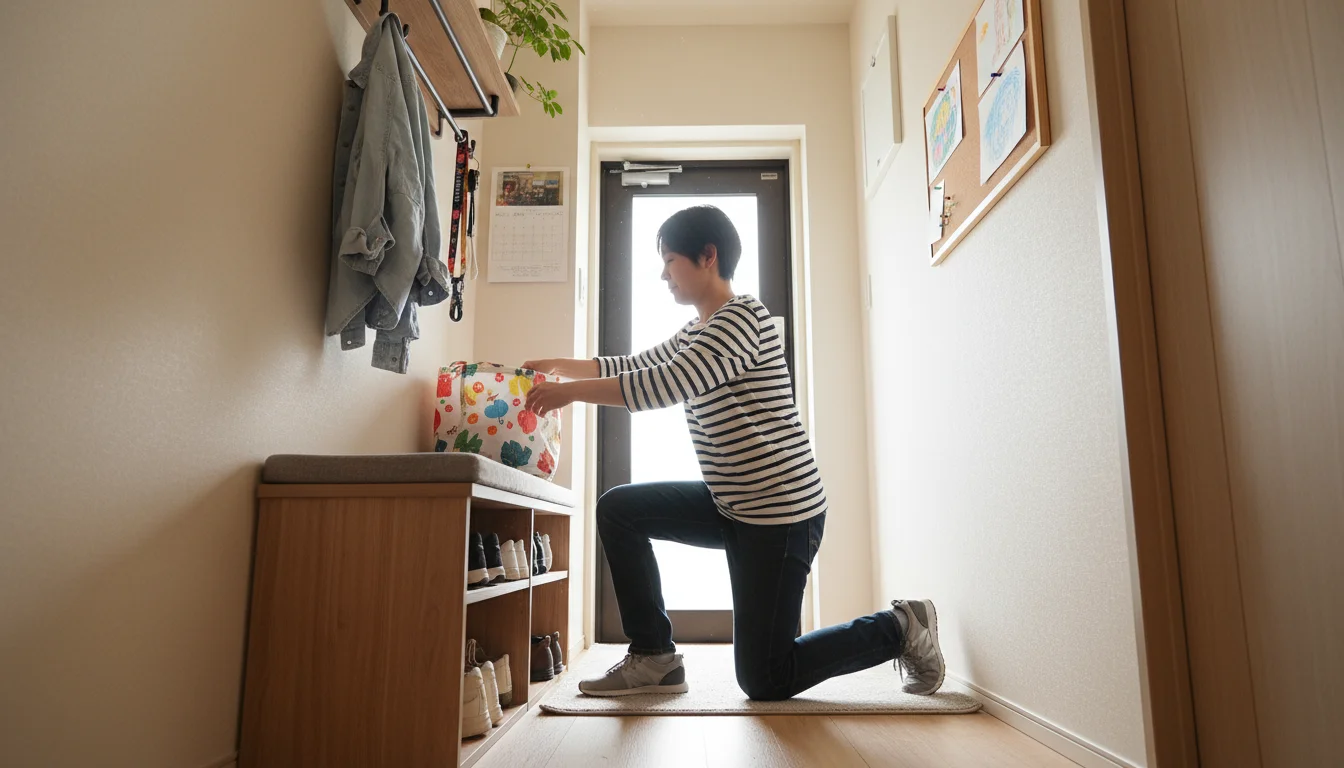
Smart Solutions for Small Entryways and Mudrooms
Whether you have a tiny apartment entrance or a full-fledged mudroom, tailored solutions optimize your space. Acknowledging common constraints helps you choose the right tools.

For Small Entryways and Apartments:
- Go vertical: When floor space is limited, look up. Floating shelves, wall-mounted organizers, and vertical key racks keep surfaces clear.
- Slim furniture: Opt for narrow console tables or benches that don’t protrude too far into the walkway. A depth of 10-12 inches can make a big difference.
- Over-the-door solutions: An over-the-door organizer on the inside of your entry closet or a door-mounted hook rack for coats and bags makes effective use of otherwise unused space.
- Multi-functional pieces: A small ottoman with hidden storage for gloves and scarves, or a mirror with integrated hooks, serves multiple purposes without consuming extra space.
- Mirrors: A mirror not only offers a last-minute check before you leave, but also reflects light, making a small entryway feel larger and brighter.
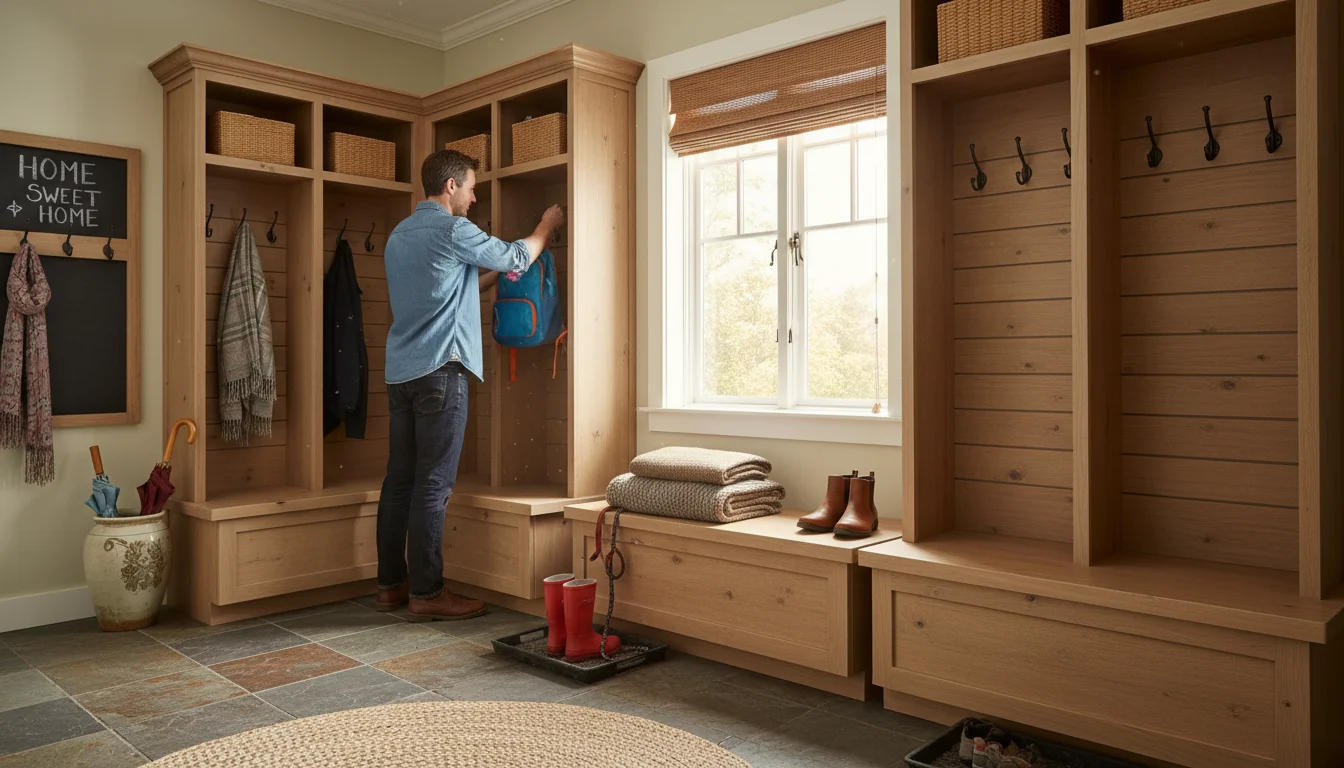
For Mudrooms and Larger Entryways:
- Built-in or standalone lockers: If space allows, individual lockers or cubbies provide dedicated storage for each family member’s coats, backpacks, and shoes, significantly reducing clutter.
- Benches with integrated storage: A sturdy bench with lift-top storage or drawers underneath is ideal for seasonal items, sports equipment, or extra shoe storage. You can find many versatile options, including IKEA’s range of entryway organization solutions, that fit various budgets and styles.
- Heavy-duty hooks: Mudrooms often handle heavier items. Invest in robust hooks for backpacks, sports bags, and wet coats.
- Shoe racks and bins: Designate clear areas for shoe storage. Large bins or dedicated shoe shelves keep boots and multiple pairs tidy.
- Utility sink: If your mudroom is a true utility space, a small sink proves invaluable for quick clean-ups of muddy hands or pet paws.
The key for both small and large spaces is to identify the common items that collect in your entryway and provide a clear, accessible home for them. Prioritize solutions that blend functionality with your home’s aesthetic, ensuring the space feels both practical and welcoming.
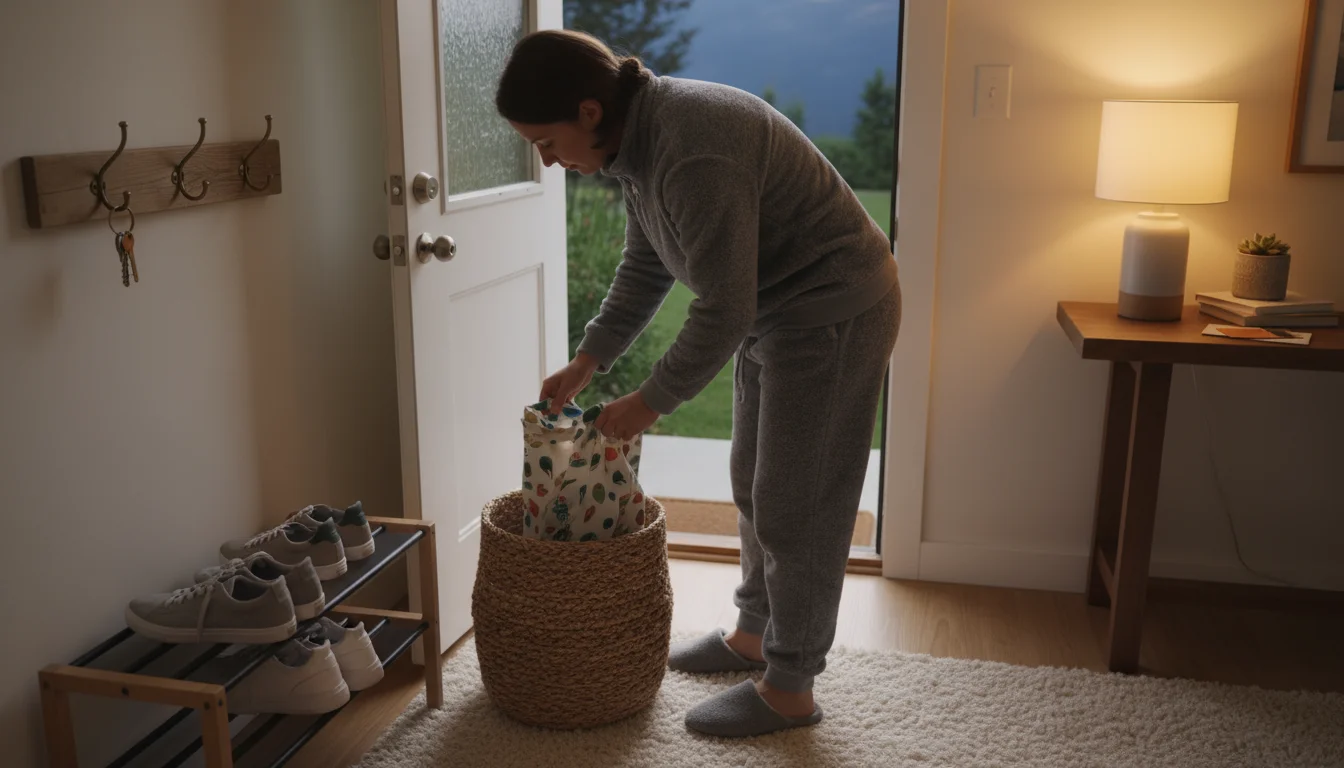
Maintaining Your Organized Entryway: The 5-Minute Daily Sweep
Organizing your entryway in under an hour is a fantastic quick win, but the real challenge lies in keeping it that way. Implement simple maintenance habits to prevent clutter from accumulating again. Consistency is your best friend here, and it requires only a few minutes each day.
Your 5-minute daily maintenance routine:
- Immediate put-away: As soon as you walk in, make it a habit to put keys on their hook, mail in its designated tray, and shoes on their rack. Encourage everyone in your household to do the same. This “zero-tolerance for clutter” approach prevents piles from forming.
- The “before bed” sweep: Before you head to bed, take a quick scan of your entryway. Relocate any items that have wandered in from other rooms. Toss obvious trash. This only takes a minute or two but makes a huge difference in waking up to a tidy space.
- Weekly check-in: Once a week, spend five extra minutes doing a slightly deeper dive. Empty the mail tray, ensuring nothing important gets buried. Quickly wipe down the console table or shoe rack. Check the coat hooks for any forgotten items or coats that belong in a closet.
Additional tips for lasting order:
- One-in, one-out rule: For items like coats, scarves, or hats, try to implement a “one-in, one-out” policy. If you buy a new winter coat, consider donating an old one. This prevents your coat and bag zone from becoming overwhelmed.
- Regular decluttering: Every few months, quickly repeat phase 1 of your original organization process. This helps you identify items that have snuck back into the entryway or items you no longer need.
These small, consistent efforts compound over time, making it far easier to maintain your organized entryway than to constantly battle overwhelming clutter. You’ve established functional systems; now nurture them.

Frequently Asked Questions
How do I manage mail clutter in my entryway?
The best way to manage mail clutter is to process it immediately upon entering your home. Stand over a trash or recycling bin and discard junk mail right away. Keep a designated tray or box in your entryway for actionable mail, such as bills or invitations. Plan to process this mail daily or every other day, rather than letting it pile up.
What’s the best shoe storage solution for a family of four?
For a family of four, vertical shoe storage solutions typically work best. Consider a tiered shoe rack, a shoe cabinet with multiple compartments, or a bench with built-in cubbies. Each family member can have a designated shelf or cubby, making it easy to put shoes away and reducing floor clutter. A shoe tray is also essential to contain dirt and water, especially for frequently used outdoor shoes.
Can I really organize my entryway in under an hour if it’s a disaster?
Yes, you absolutely can! The key is to manage your expectations. In under an hour, you’ll achieve a significant “quick win” by focusing on decluttering, cleaning, and setting up basic organizational zones. It might not be picture-perfect, but it will be vastly more functional and visually appealing. You’re building a foundation, not completing a full renovation. Stick to the timer and prioritize quick decisions.
How can I make my entryway look good while being functional?
Combine aesthetics with utility. Choose storage solutions that complement your home’s style, like a decorative basket for essentials or a sleek, wall-mounted coat rack. Add a few decorative elements, such as a small mirror, a piece of art, or a low-maintenance plant. Use consistent colors and materials for your organizational tools to create a cohesive, intentional look. The goal is to make the space feel inviting and efficient.
For expert home organization guidance, visit
Better Homes & Gardens — Home Organization, EPA — Indoor Air Quality, Energy Star, CDC — Cleaning and Disinfecting and American Cleaning Institute.
Disclaimer: This article is for informational purposes only and is not a substitute for professional advice. Consult professional organizers or specialists for personalized recommendations.

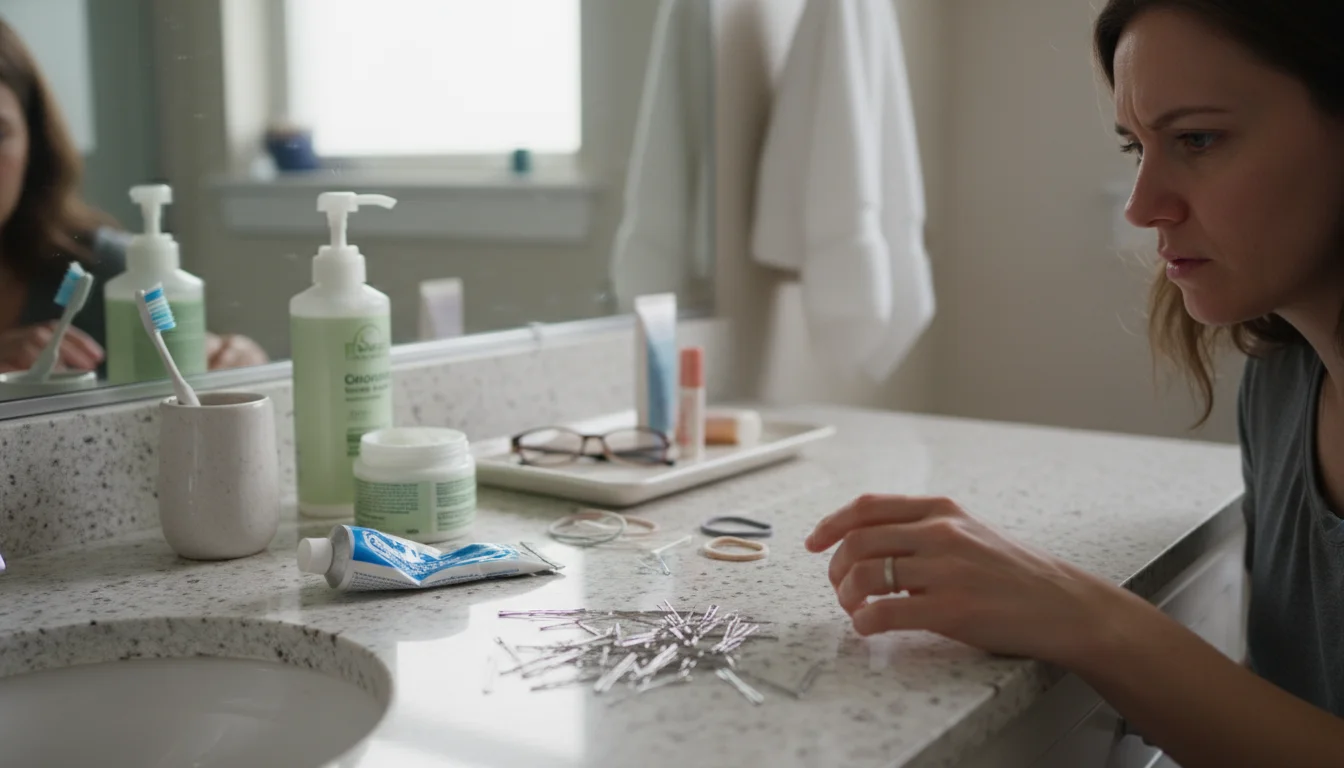
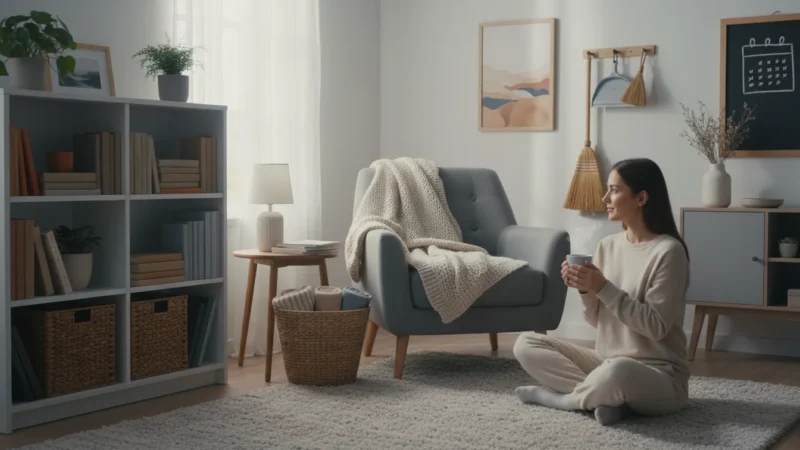
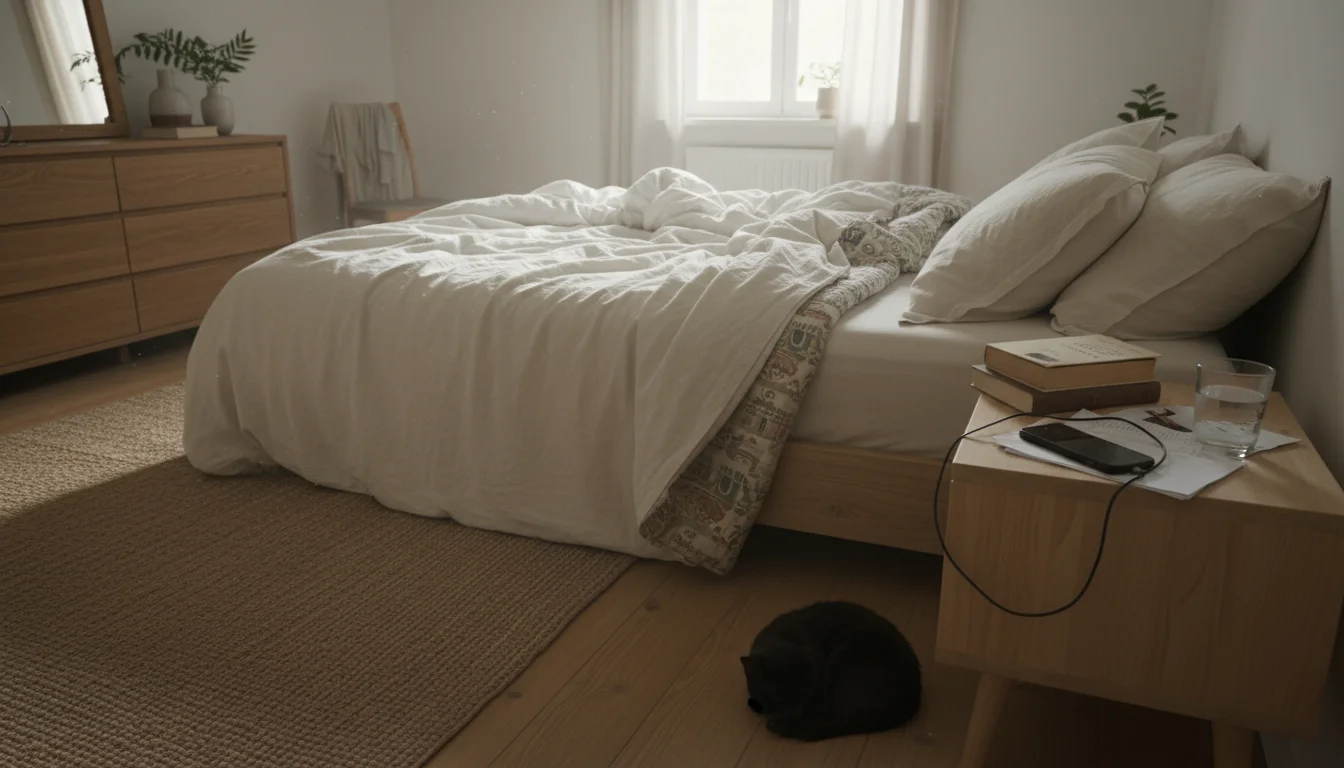

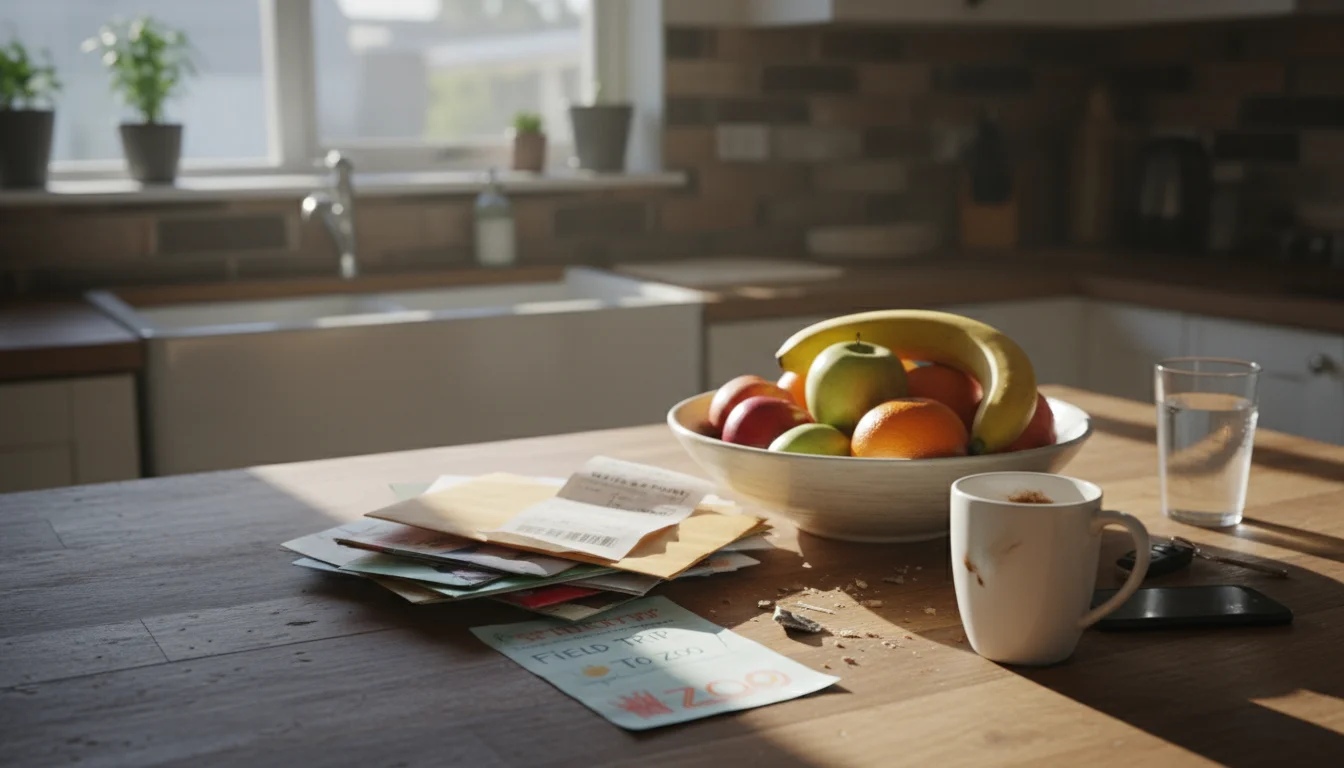
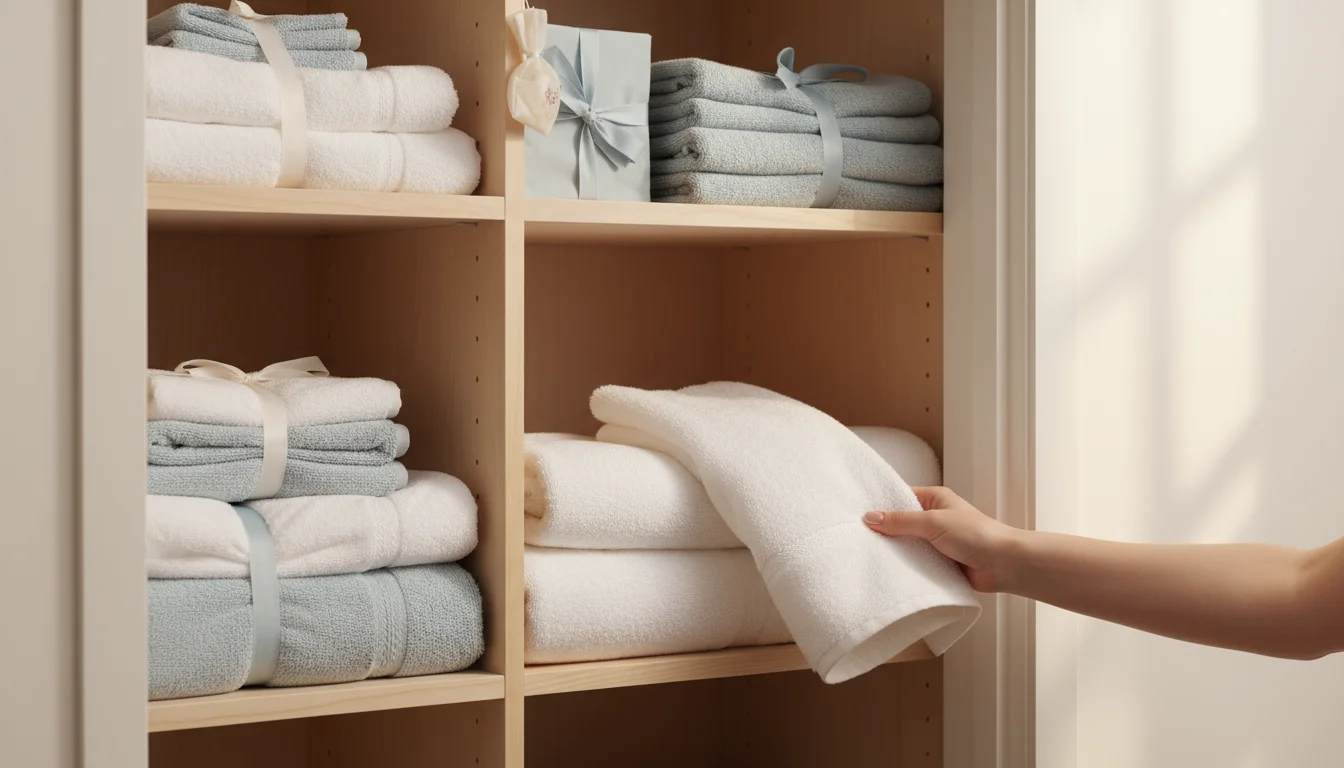
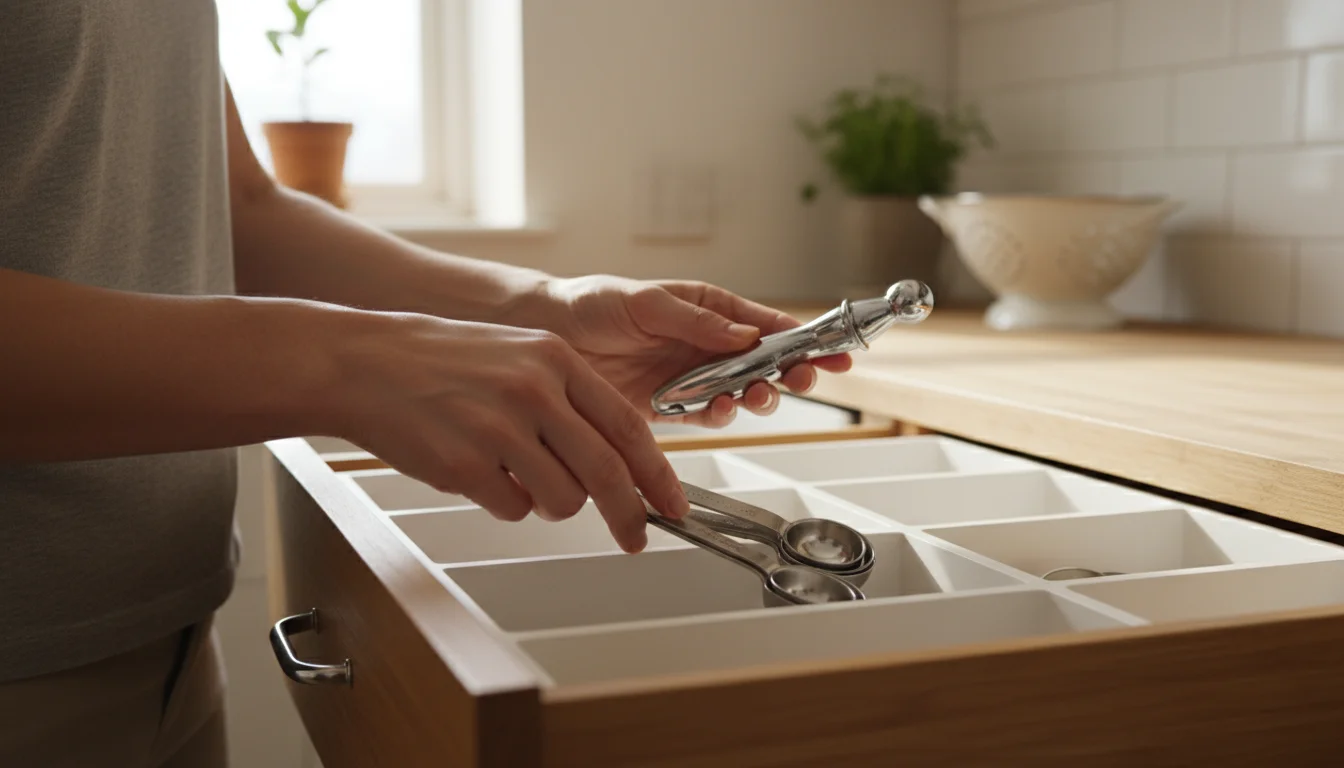

I’m finally getting into a cleaning rhythm.